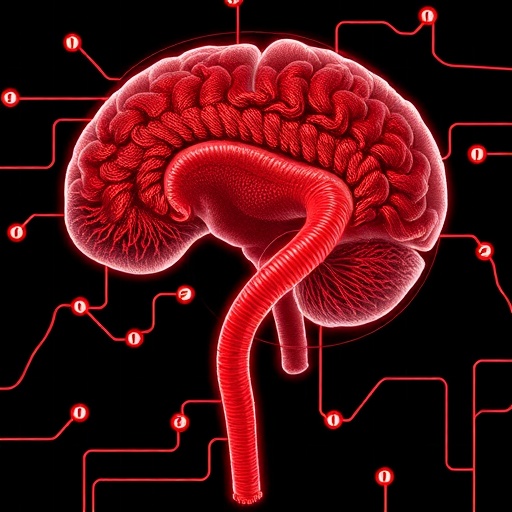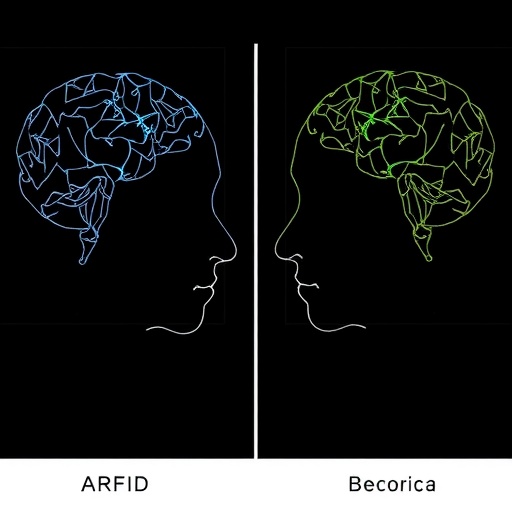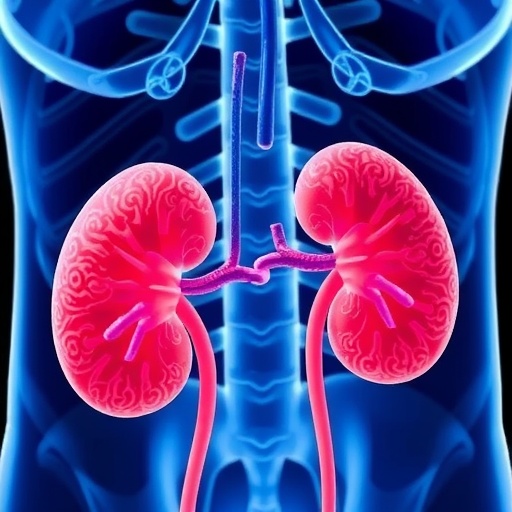In a groundbreaking study poised to redefine our understanding of the intricate relationship between metabolism and mental health, researchers have uncovered a novel feedback loop between the pancreas and hippocampus that regulates circadian fluctuations in depression-related behaviors. This discovery elucidates a biological mechanism that may explain why individuals with neuropsychiatric disorders such as bipolar disorder often grapple with metabolic symptoms, a connection that has long puzzled scientists and clinicians alike.
At the heart of this revelation lies the retinoic acid receptor-related orphan receptor beta (RORβ), a gene implicated in bipolar disorder susceptibility. Using cutting-edge induced pluripotent stem cell (iPSC) technology, scientists derived pancreatic islets from patients diagnosed with bipolar disorder. These specialized clusters of cells exhibited marked deficits in insulin secretion, a critical hormone for regulating blood glucose levels. Intriguingly, this dysfunction was directly linked to an aberrant overexpression of RORβ, underscoring the gene’s pivotal role not only in neural function but also in peripheral metabolic systems.
Delving deeper, the research team employed genetically engineered mouse models, manipulating RORβ expression specifically within pancreatic β cells. The results were nothing short of astonishing: mice with enhanced pancreatic RORβ expression displayed clear-cut alterations in behavior corresponding to the light and dark phases of their circadian cycle. During the light phase—when rodents typically rest—these mice exhibited depression-like behaviors characterized by reduced activity and diminished responsiveness. Conversely, as night fell and the dark phase commenced, these same animals switched to mania-like behaviors, manifesting hyperactivity and heightened exploratory actions.
.adsslot_2OBkgMowu0{ width:728px !important; height:90px !important; }
@media (max-width:1199px) { .adsslot_2OBkgMowu0{ width:468px !important; height:60px !important; } }
@media (max-width:767px) { .adsslot_2OBkgMowu0{ width:320px !important; height:50px !important; } }
ADVERTISEMENT
This biphasic behavioral shift draws compelling parallels to the oscillating mood states seen in human bipolar disorder, providing a tangible biological substrate for such cyclic changes. Yet, the mechanisms mediating this phenomenon remained to be fully elucidated. To that end, the team explored the impact of pancreatic RORβ augmentation on insulin dynamics and hippocampal function across the circadian cycle. They discovered that overexpression of RORβ in the pancreas during the light phase suppressed insulin release from the islets. This reduction in circulating insulin triggered overactivity in the hippocampus, a brain region integral to mood regulation and cognitive processes. The hyperexcitable hippocampus, in turn, was associated with depression-like behavioral manifestations.
Perhaps most fascinating was the reciprocal portion of this feedback loop: the hippocampal hyperactivity driven by low insulin in the light phase set in motion a delayed response, enhancing insulin secretion from the pancreatic islets during the dark phase. This surge in insulin then dampened hippocampal neuronal activity, culminating in mania-like behaviors. This dynamic interplay between the pancreas and hippocampus highlights the elegance of a bidirectional communication pathway that synchronizes metabolic and circadian factors to shape mood states.
This pancreas-hippocampus feedback mechanism challenges conventional views that separate peripheral metabolic regulation from central nervous system function in neuropsychiatric conditions. Instead, it posits an integrated systemic network wherein circadian rhythms modulate both insulin secretion and neuronal excitability, ultimately influencing complex behaviors. Such insights pave the way for novel therapeutic targets aimed at disrupting maladaptive cycles in bipolar disorder by modulating peripheral metabolic signals.
A notable aspect of this research is the utilization of human iPSC-derived pancreatic islets, which allowed for precise modeling of disease-relevant cellular phenotypes. By recapitulating patient-specific molecular alterations in vitro, the study bridges the translational gap between genetics and physiology, affording unprecedented insights into cell-type-specific pathophysiology.
Moreover, the circadian-dependent behavioral phenotypes uncovered in mice offer a biologically plausible explanation for the temporal mood fluctuations that define bipolar disorder. Unlike static models of mood regulation, this research highlights how dynamic metabolic processes intersect with neural circuitry in a time-dependent manner, providing mechanistic clarity to previously observed clinical rhythms.
The study also prompts intriguing questions about how environmental factors such as light exposure, feeding patterns, and sleep hygiene might influence the pancreas-hippocampus axis and, by extension, mood stability. It raises the prospect that lifestyle interventions targeting circadian alignment and metabolic control could have rapid and profound impacts on psychiatric outcomes.
From a molecular standpoint, RORβ emerges as a critical nexus linking peripheral and central pathology in bipolar disorder. Its dual role in regulating insulin secretion and modulating neural circuits opens new avenues for drug development. Pharmacological modulation of RORβ activity may offer a means to simultaneously recalibrate metabolic and mood disturbances, representing a paradigm shift in treatment approaches.
This research also underscores the value of interdisciplinary approaches that integrate neuroscience, endocrinology, and circadian biology. Such cross-cutting methodologies are essential for unraveling the complex etiologies of neuropsychiatric diseases, which do not recognize traditional boundaries between organ systems.
In sum, the elucidation of a pancreas-hippocampus feedback circuit governing circadian mood fluctuations represents a landmark advance in neuroscience and psychiatric research. It not only deepens our understanding of bipolar disorder but also sets the stage for innovative therapies that target systemic physiological rhythms to restore mental health. This work exemplifies the power of modern biomedical techniques to illuminate hidden biological connections with profound clinical implications.
As research continues to unravel these intricate links, the hope is that patients suffering from mood disorders may one day benefit from personalized treatments that harness the body’s own circadian and metabolic machinery to achieve sustained remission. The convergence of genetic, cellular, and behavioral data in this study offers a blueprint for such transformative breakthroughs.
Ultimately, this discovery serves as a potent reminder of the deep integration between mind and body, challenging us to rethink mental illness within a holistic physiological context. By advancing our grasp of how metabolic and neural systems interface through circadian rhythms, scientists are opening new frontiers in psychology, psychiatry, and medicine.
Subject of Research: Bipolar disorder, circadian rhythms, pancreas-hippocampus feedback mechanism, insulin secretion, neuropsychiatric and metabolic interactions
Article Title: A pancreas–hippocampus feedback mechanism regulates circadian changes in depression-related behaviors
Article References:
Liu, YN., Wang, QW., She, XY. et al. A pancreas–hippocampus feedback mechanism regulates circadian changes in depression-related behaviors. Nat Neurosci (2025). https://doi.org/10.1038/s41593-025-02040-y
Image Credits: AI Generated
Tags: bipolar disorder and metabolismcircadian rhythms in depressiondaily rhythms of depressionfeedback loop between pancreas and braingenetic manipulation of RORβinduced pluripotent stem cell technologyinsulin secretion deficits in bipolar disordermetabolism and mental healthmouse models in psychiatric researchneuropsychiatric disorders and metabolismpancreas hippocampus circuitretinoic acid receptor-related orphan receptor beta





